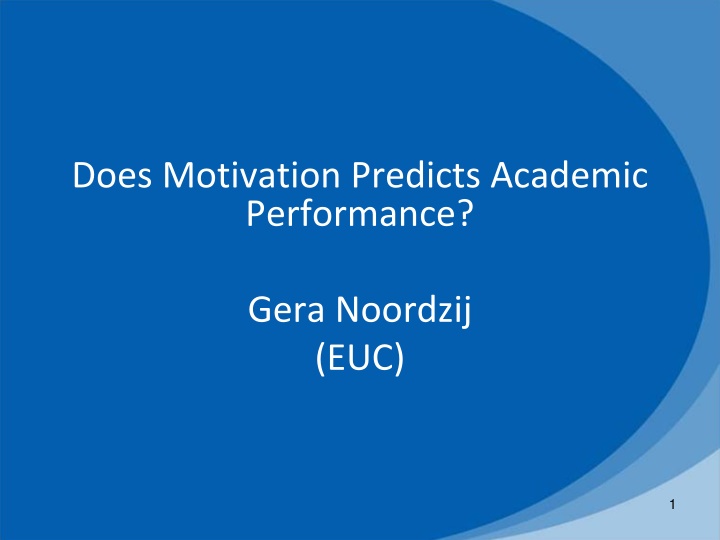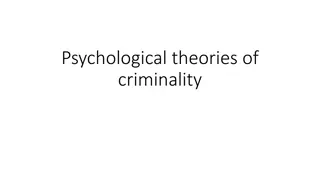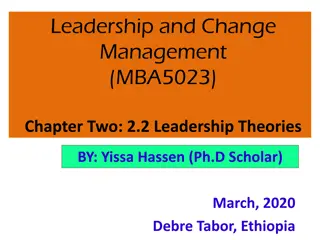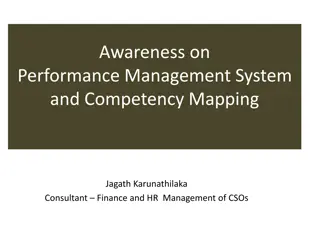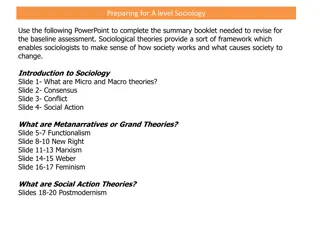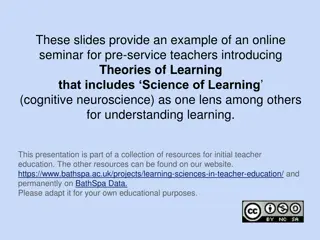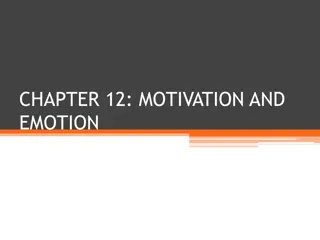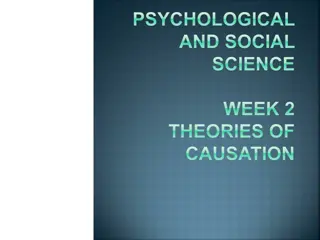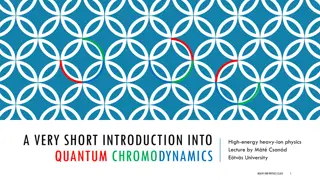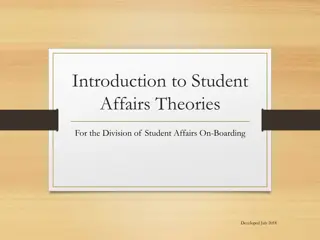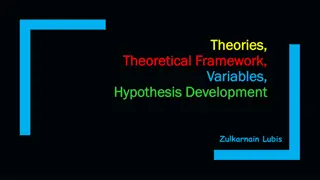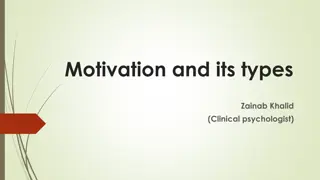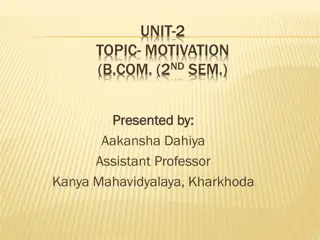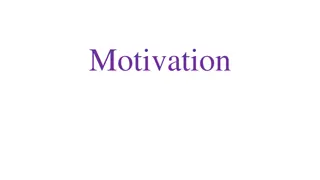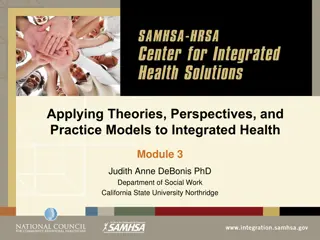Motivation Theories and Academic Performance Study
In this study, various motivation theories are explored in relation to academic performance. The research delves into factors such as operant conditioning, self-determination theory, achievement goal orientation theory, and more to understand their impact on academic success. Additionally, longitudinal research is conducted to examine the stability and change in motivation over time and its correlation with academic performance. The study analyzes external motivation, intrinsic motivation, identified motivation, and other aspects to determine their predictive role in academic achievements.
Download Presentation

Please find below an Image/Link to download the presentation.
The content on the website is provided AS IS for your information and personal use only. It may not be sold, licensed, or shared on other websites without obtaining consent from the author.If you encounter any issues during the download, it is possible that the publisher has removed the file from their server.
You are allowed to download the files provided on this website for personal or commercial use, subject to the condition that they are used lawfully. All files are the property of their respective owners.
The content on the website is provided AS IS for your information and personal use only. It may not be sold, licensed, or shared on other websites without obtaining consent from the author.
E N D
Presentation Transcript
Does Motivation Predicts Academic Performance? Gera Noordzij (EUC) 1
Motivation theories Operante conditioning Theory of Action Control Learned Helplessness/Optimist Theory Social Learning Theory Expectancy Value Theories Need Theory Control theory Self-regulatory focus Self-Determination Theory Achievement Goal Orientation Theory Drive reduction theorie Goal-setting Theory Social Cognitive theory Theory of reasoned action Theory of Achievement Motivation Two factor Theory Theory of Planned Behavior Flow Attribution theory Proactive personality construct Psychoanalytic Theory Equity Theory 2
Self-determination theory (Deci & Ryan, 2000) External motivation Introjected motivation Identified motivation Intrinsic motivation Amotivation Controlled motivation Autonomous motivation 3
Achievement goal (orientation) theory (Dweck, 1986; Elliot & McGregor, 2001;Van Yperen, 2006) Intrapersonal Mastery-approach Improving competences 34.4% In my study, I prefer challenging tasks that I can learn a lot from Interpersonal Approaching Success Performance-approach Demonstrating competences 13.7% I enjoy it when other students are aware of how well I m doing Mastery-avoidance Avoiding intrapersonal incompetence 33.6% I prefer to avoid situations in my study wher I might perform poorly Performance-avoidance Avoiding interpersonal incompetence 18.3% In my study, I prefer to avoid failures in front of others Avoiding Failure 4
Longitudinal research Psychology and EUC Stability and change in motivation (goals and reasons) to study Motivation predictor of academic performance? Procedure: SDT (reasons) and AGT (goals): at the start (T1), end first academic year (T2) and end second year (T3). Grades, professional behaviour and N=N, 5
Academic motivation Start Orange =2011 Psych. Red = 2012 Psych. Green = 2013 EUC White = 2014 EUC 6.00 5.00 4.00 3.00 2.00 1.00 0.00 A-motivation: F = 8.50, p < .001 Autonomous motivation: F = 2.83, p < .05 Controlled motivation: F = 0.67, p > .05 6
Achievement goals Start Orange =2011 Psych. Red = 2012 Psych. Green = 2013 EUC White = 2014 EUC 4.50 4.00 3.50 3.00 2.50 2.00 1.50 1.00 0.50 0.00 Mastery-approach F = 16.01, p < .001 Perf.-approach F = 2.01, p > .05 Perf.-avoidance F = 18.99, p < .001 Mastery-avoidance F = 18.51, p < .001 7
Does it predict anything? Psychologie: N = N : A-motivation Grades: A-motivation Prof. behaviour: autonomous, controlled and a- motivation EUC ---- 8
Stability and Change (T1-T2-T3) (Sample level) Mean level change A-motivation: decrease Controlled motivation: curvilinear Autonomous motivation: stable Mastery-approach goals: increase Performance-approach: u-shaped Performance-avoidance goals: decrease Mastery-avoidance goals: decrease Differential continuity Academic motivation: .57 Achievement goals: .46 9
Person-level 2.00 Low quantity motivation and goals group 1.50 1.00 High quality motivation and goals group 0.50 0.00 Moderate quality motivation and goals group -0.50 -1.00 High quantity motivation and goals group -1.50 A-motivation with low qualtity goals group -2.00 -2.50 MAP MAV PAP PAV Auton. Contr. A-Mot. -3.00 10
Person-level Profiles predict: N = N Grades Professional behaviour In general: Students with high quality goals and motivation (green) highest grades etc. Followed by students with moderate quality goals and motivation (white) 11
Stability or Change? Solid lines p <.001 Dashed lines p < .05 Time 1 Time 2 Low motivation and goals Low motivation and goals High quality motivation and goals group High quality motivation and goals group Moderate quality motivation and goals group Moderate quality motivation and goals group High quantity motivation and goals group High quantity motivation and goals group A-motivation with low quality goals group A-motivation with low quality goals group 56% stable profile 44% profile change
